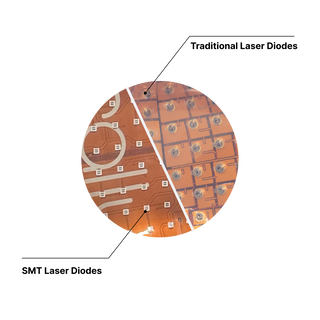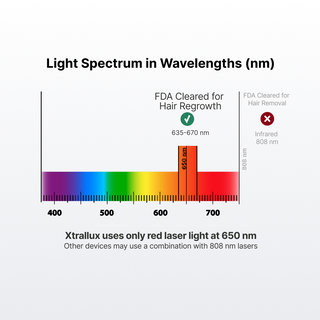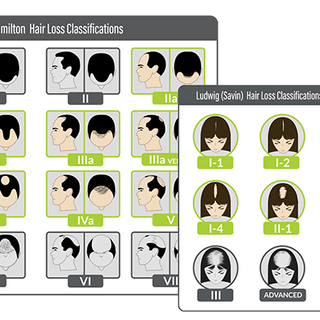
Bryan Johnson should be bald.
His genes practically guaranteed it—thinning hair in his late twenties, gray creeping in like an unwelcome guest. Now, at 46, he has a full head of hair and roughly half his gray is gone. What happened in between reads like something out of a science fiction novel, except it's grounded in biology that's happening right now, on scalps around the world.
Johnson, the tech entrepreneur who's made headlines for his extreme longevity protocols, treats his hair the way Formula One mechanics treat a race car. Every morning, he massages his scalp with a prescription serum, then clips on a red light therapy cap for six minutes while he goes about his routine. It's become as automatic as brushing his teeth.
"Genetically, I should be bald," Johnson writes in his Blueprint protocol. That single statement contains the entire revolution happening in how we think about hair loss. We used to accept our genetic fate. Now we're learning to negotiate with it.
"Start early and be proactive," he advises in his protocol. "By age 20, about 20% of men already have some visible hair loss. Many people lose up to 50% of their hair before they start to notice thinning." His point: by the time you notice you're losing hair, you've already lost the battle for thousands of follicles. Prevention is easier than resurrection.
The Light Inside Your Follicles
Here's what's actually happening when you shine red light on your scalp: You're waking up lazy cells.
Hair follicles are tiny factories. Like any factory, they need energy to run. That energy comes from mitochondria—those cellular powerhouses you might remember from high school biology. When follicles start to fail, it's often because their mitochondria are sluggish, producing less ATP (the cellular fuel) than they used to.
Red light therapy, or Low-Level Light Therapy (LLLT), does something remarkable: it gives mitochondria a nudge. When cells absorb light at specific wavelengths—around 650 nanometers, deep in the red spectrum—it triggers a cascade of cellular responses. Blood flow increases. Inflammation decreases. Cells that were barely hanging on suddenly have the resources to do their job again.

The FDA has cleared this technology for treating hereditary hair loss, which means real clinical trials have shown that shining lasers on people's heads actually increases terminal hair counts. Terminal hair is the thick, pigmented stuff you want, as opposed to the wispy vellus hair that's barely visible.
Think of it this way: your hair follicles are like seedlings trying to grow in depleted soil. Red light therapy enriches that soil at the cellular level.
Enter Xtrallux
While Johnson experiments with multiple approaches simultaneously, laser therapy has become a cornerstone of his hair regrowth strategy. This is where devices like Xtrallux come into the picture.
Xtrallux manufactures laser caps that resemble regular baseball caps, but are lined with hundreds of medical-grade laser diodes. Their Turbo Pro model packs 316 lasers into a flexible dome that fits over your scalp. You wear it for six minutes a day. That's it. No pills to remember, no messy serums dripping down your forehead.
What makes laser therapy different from LEDs or other light sources? Penetration depth. Lasers deliver focused, coherent light that penetrates deeper into the scalp tissue, reaching all the way down to where the follicles live. LEDs scatter their light more diffusely. Both produce photons, but lasers send theirs marching in formation.
Xtrallux devices don’t require Bluetooth connectivity or data sharing. You charge it, wear it, and get on with your life. The technology itself has been validated in clinical trials that the FDA accepted as proof that this actually works.
The Bigger Picture
What's fascinating about the laser therapy story is how it fits into a broader shift in how we think about aging and genetics. For generations, we accepted that certain things were inevitable: gray hair, baldness, wrinkles, decline. The new perspective says: maybe, maybe not.
Your genes load the gun, but your environment pulls the trigger. Or in the case of hair loss, fails to pull it.
LLLT works on hereditary hair loss—the kind coded into your DNA—by changing the cellular environment where that gene expression plays out. It doesn't edit your genome. It doesn't override your genetics. It simply creates conditions where your follicles can function better despite your genetic predisposition.
This is the essence of biohacking: using technology and science to nudge biology in favorable directions, not fighting against nature, but working with it. For the first time in human history, we're not just accepting whatever our DNA has planned for our scalps.
We're negotiating.







